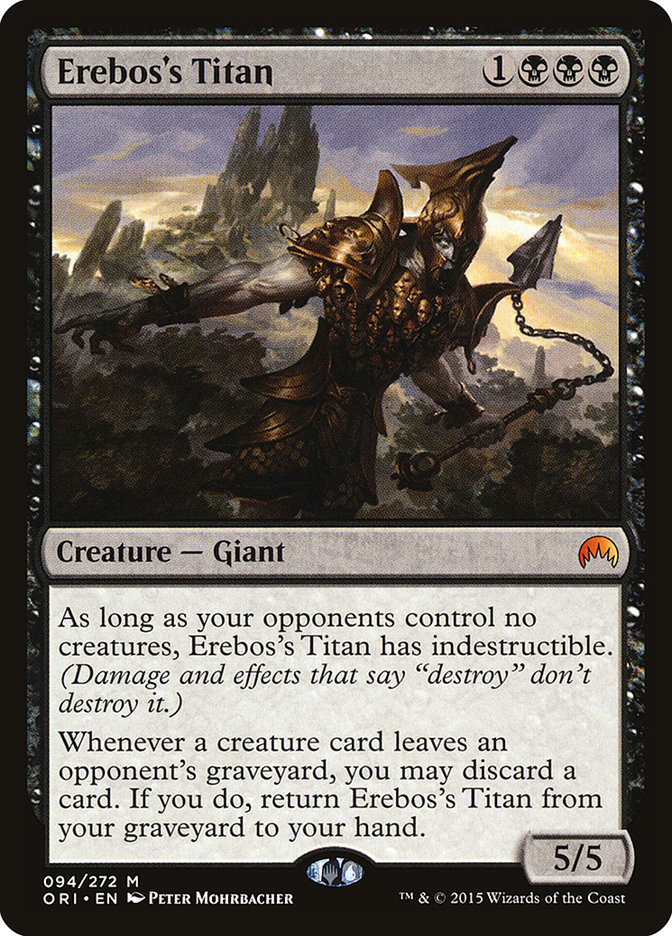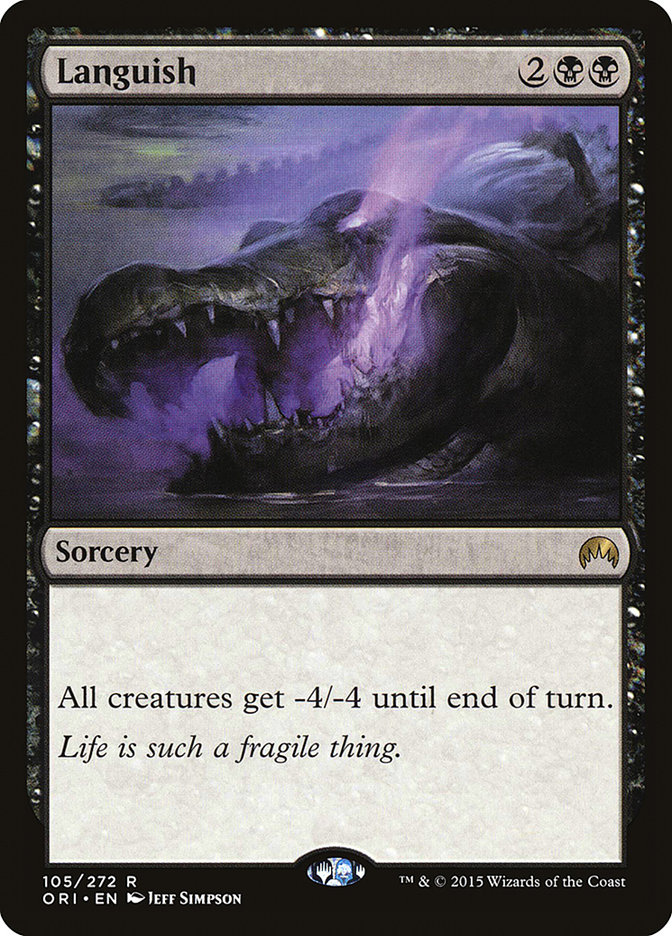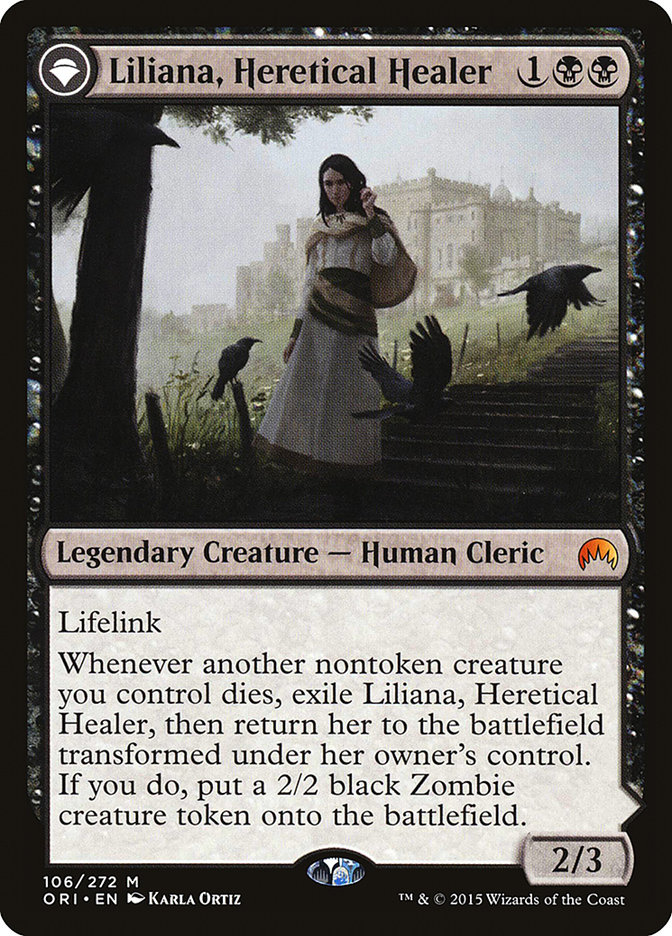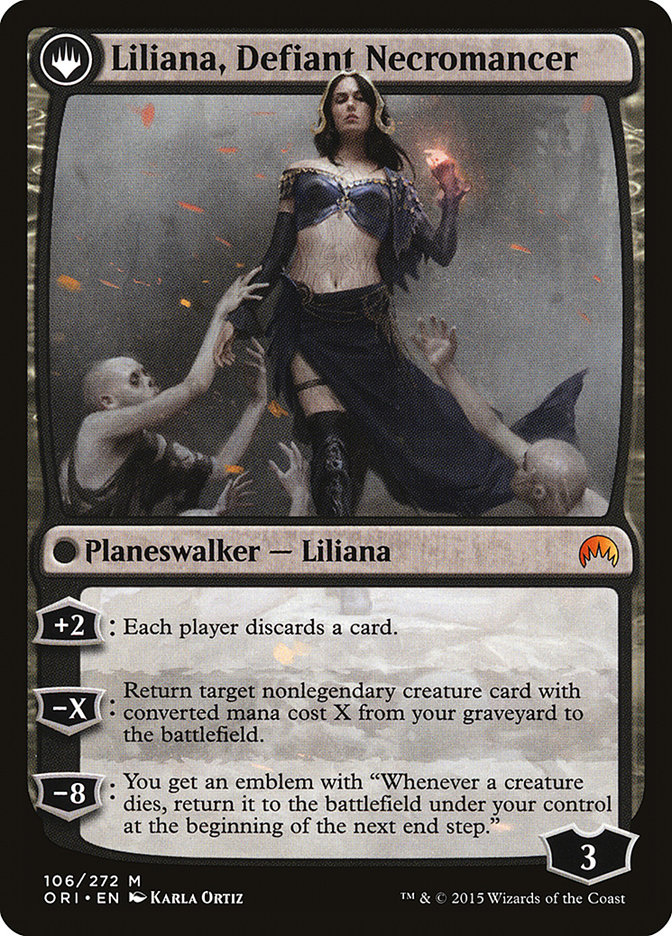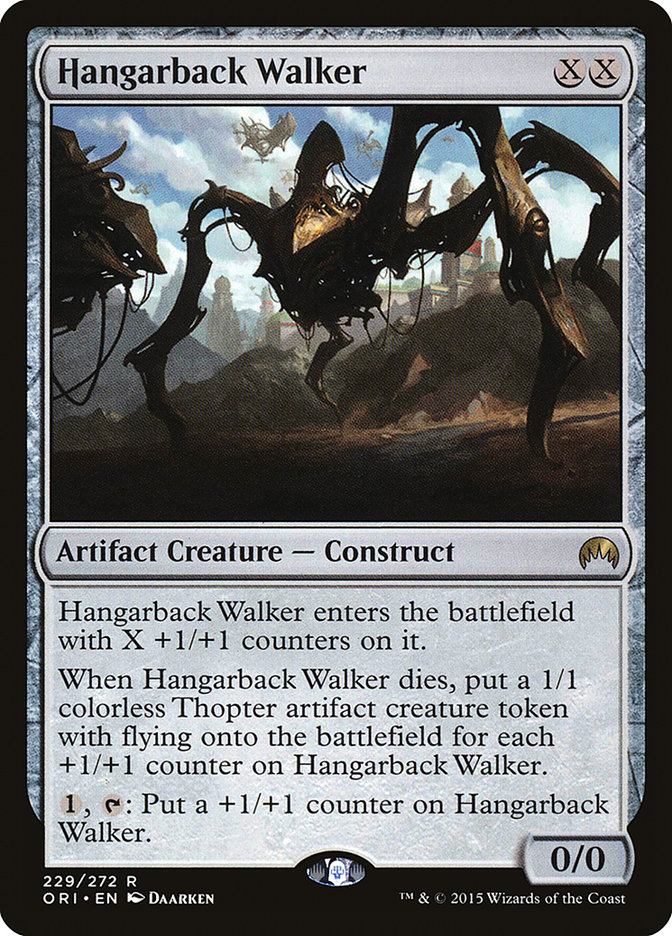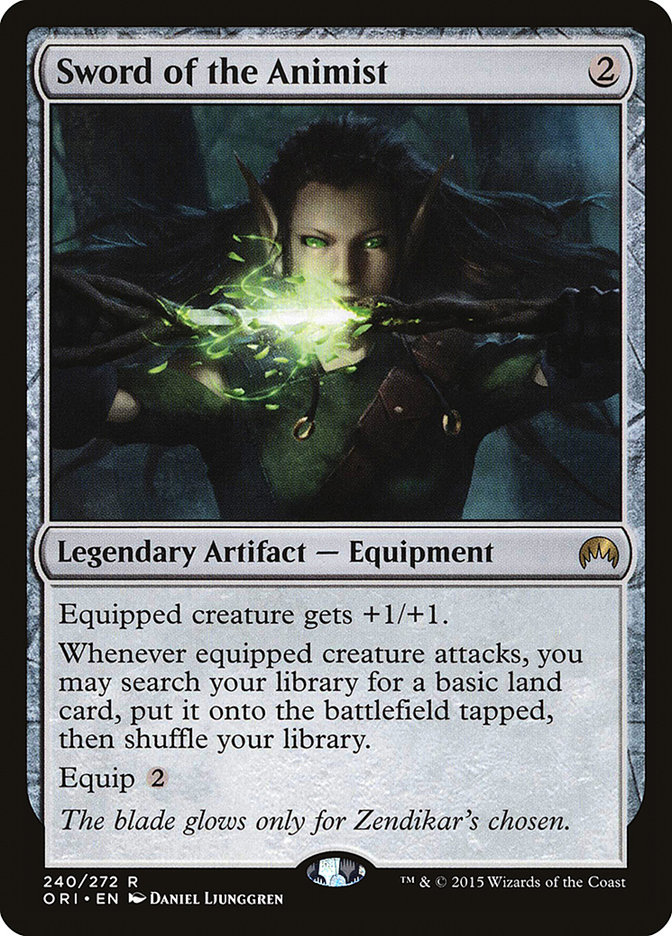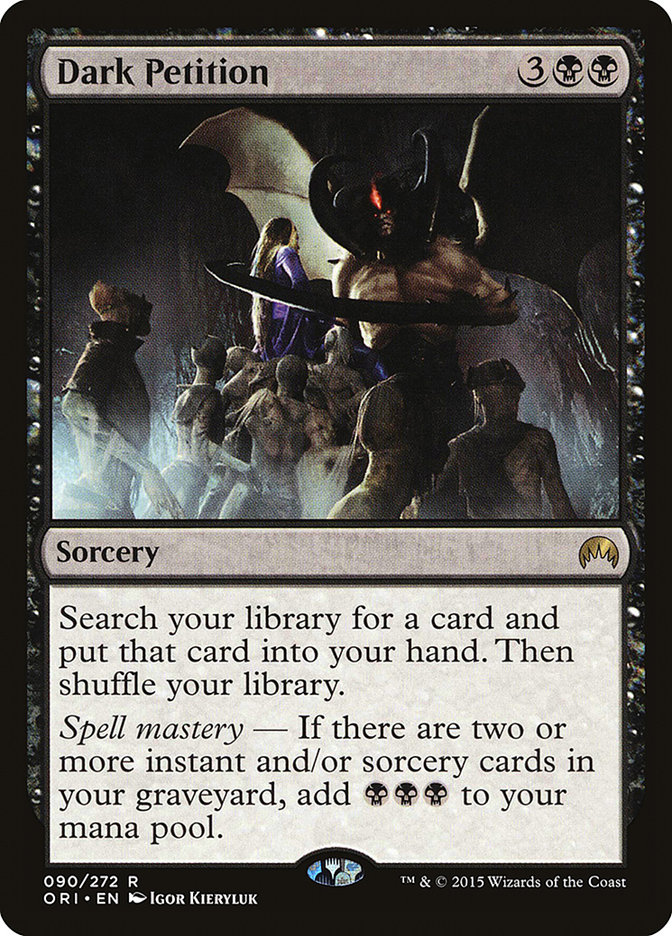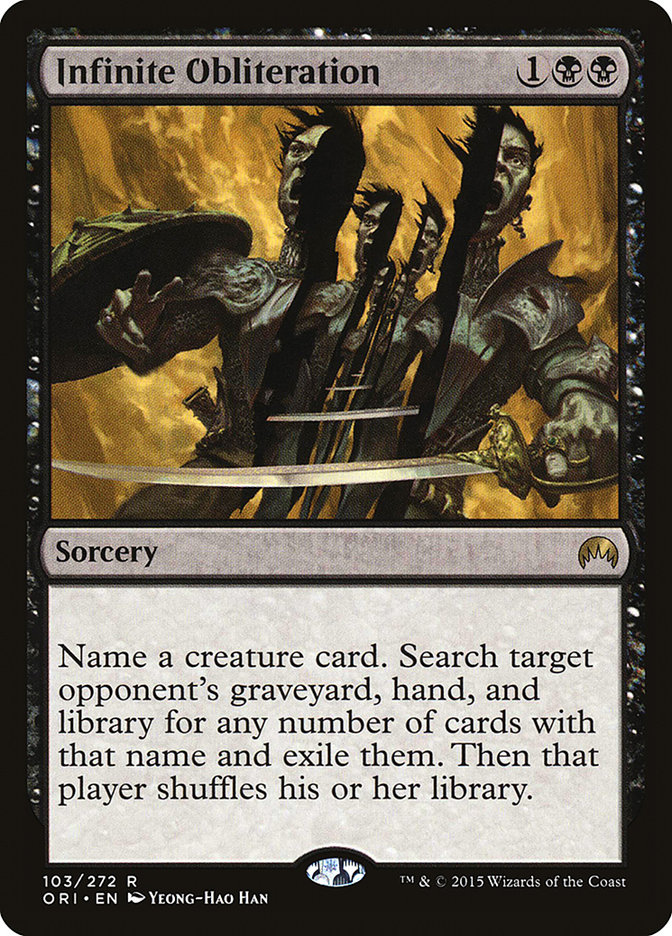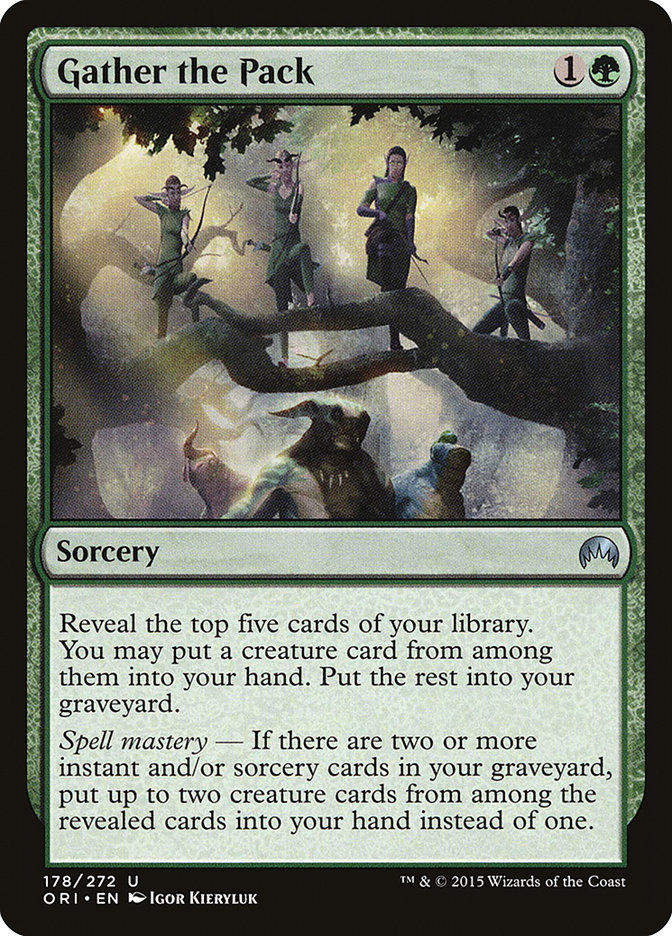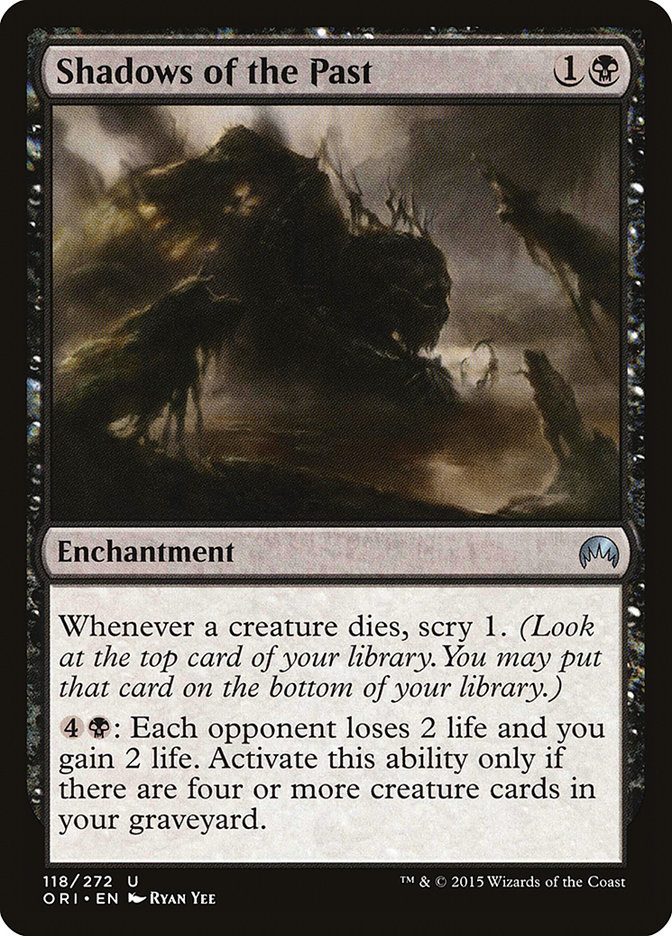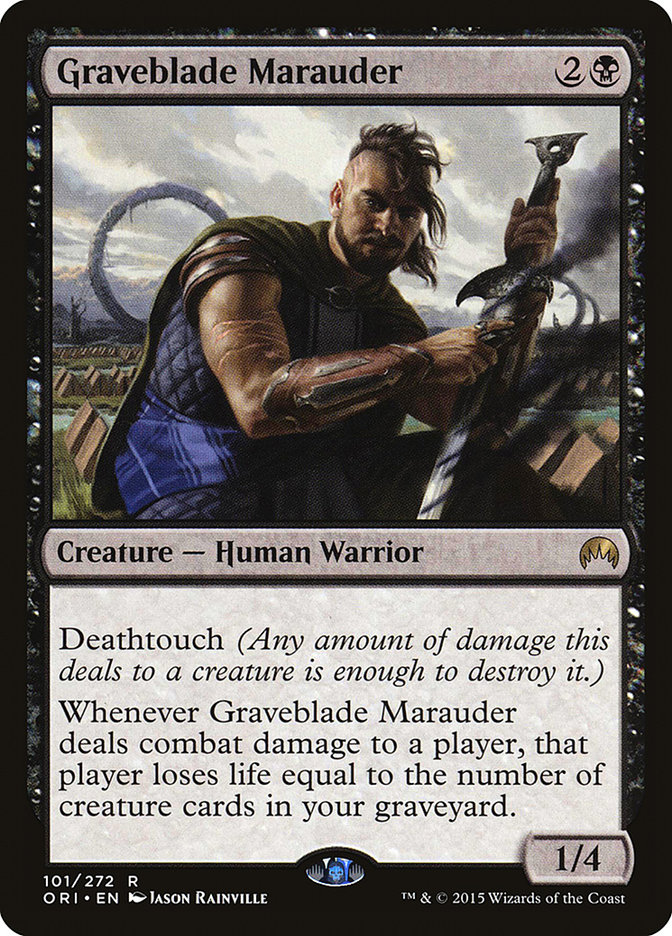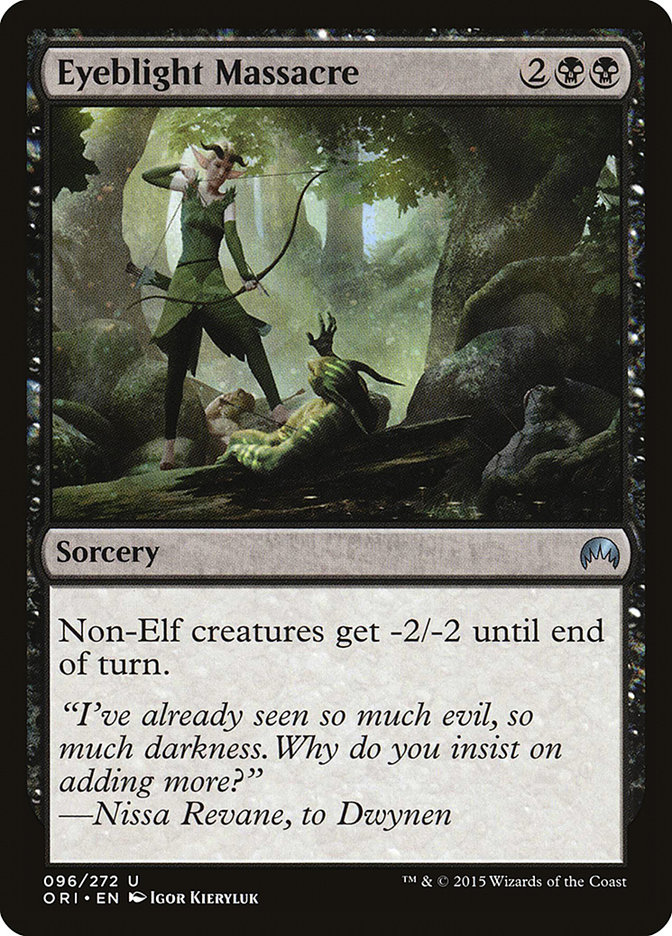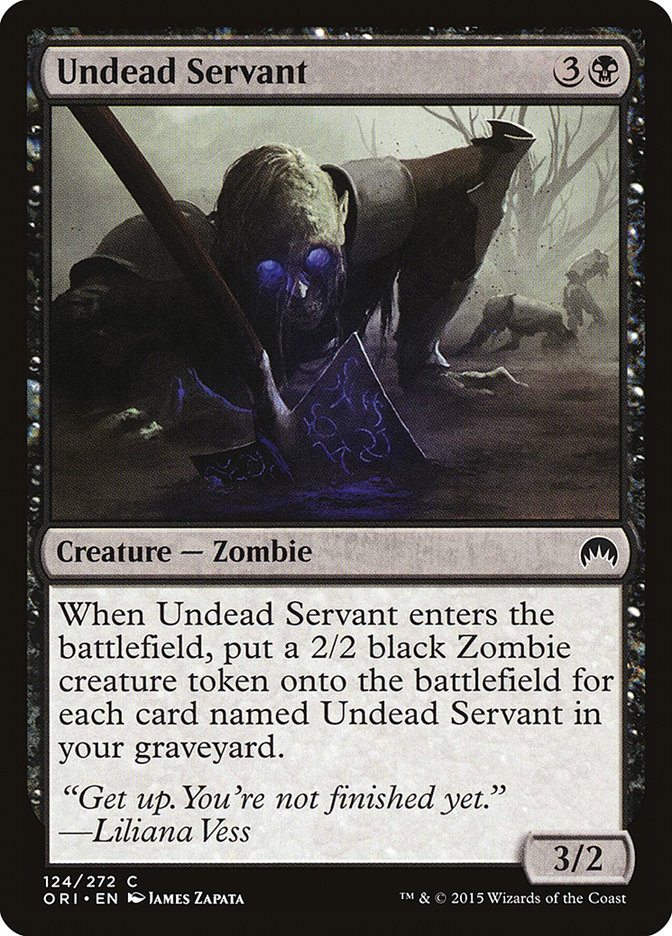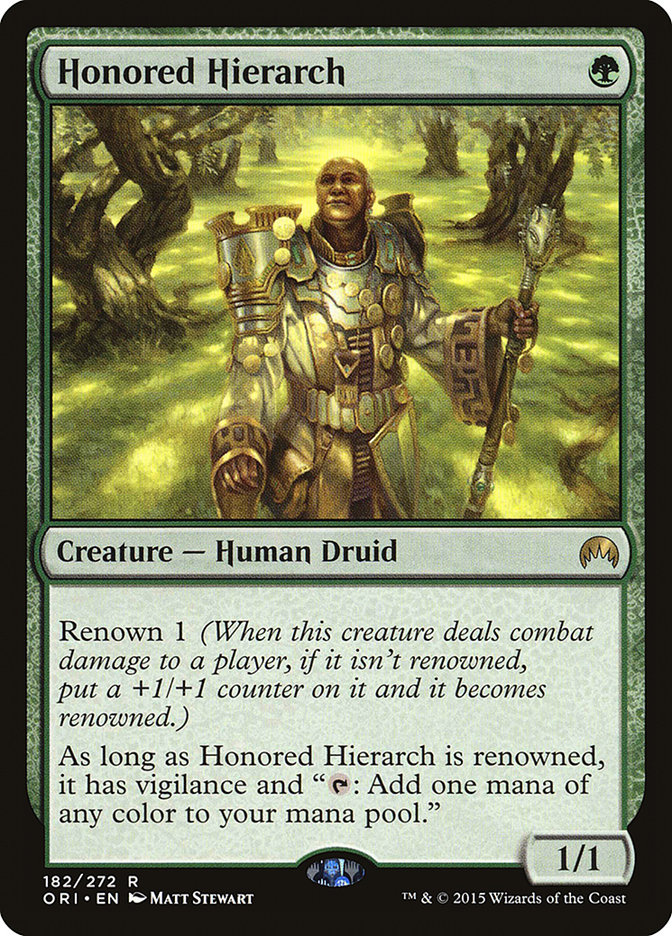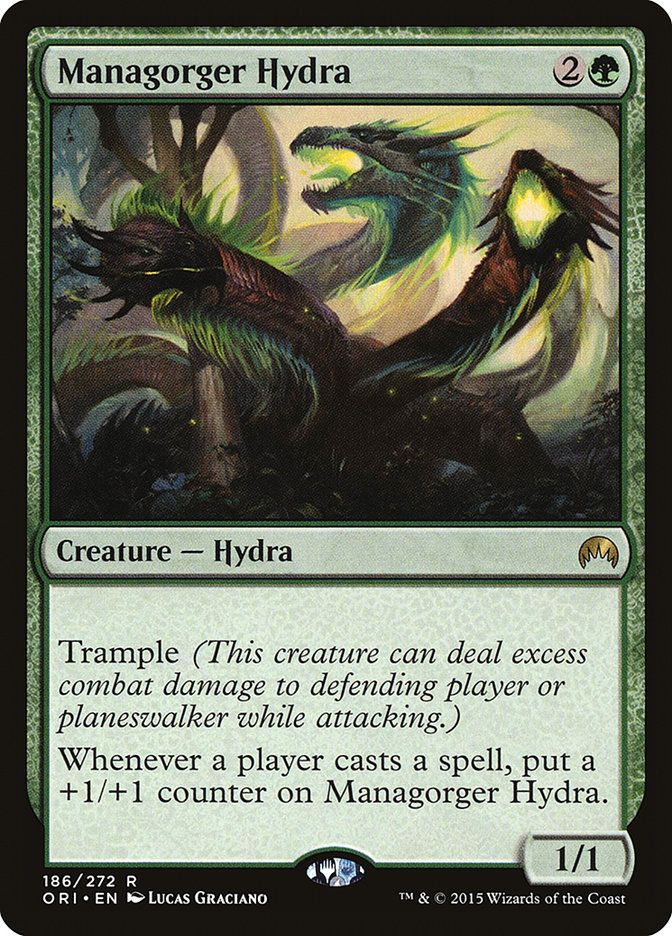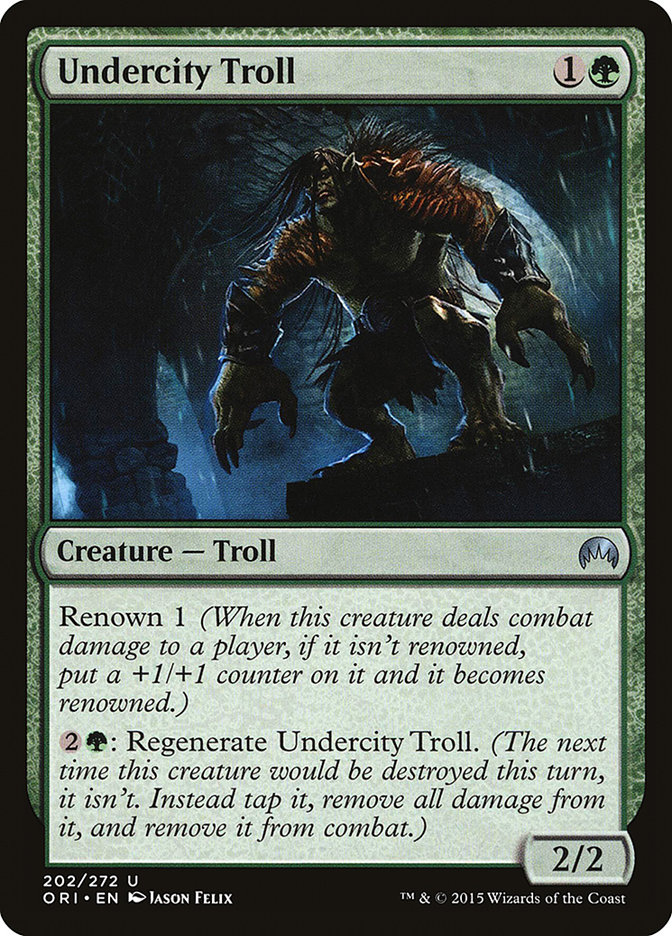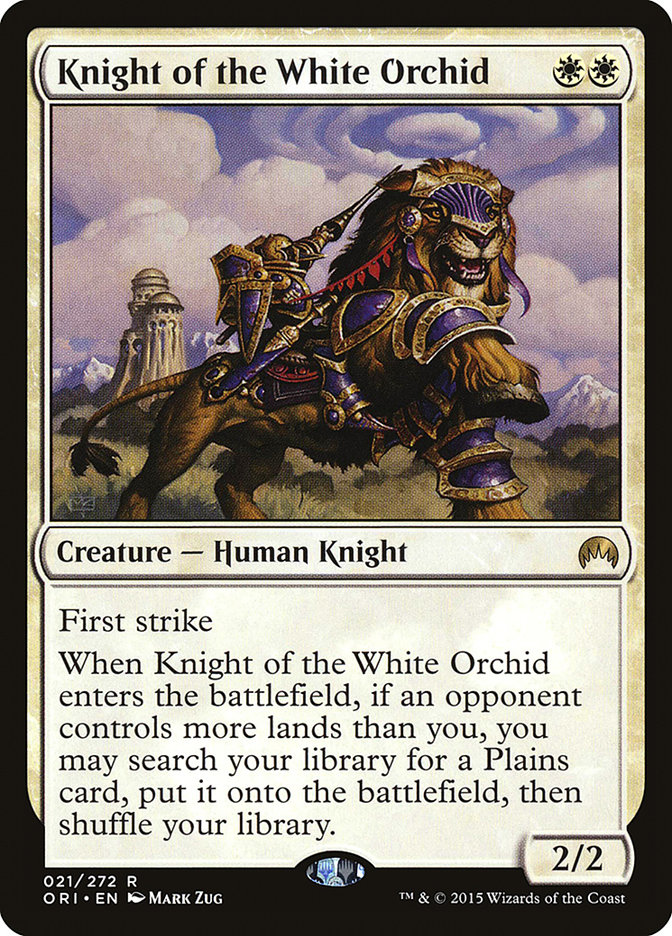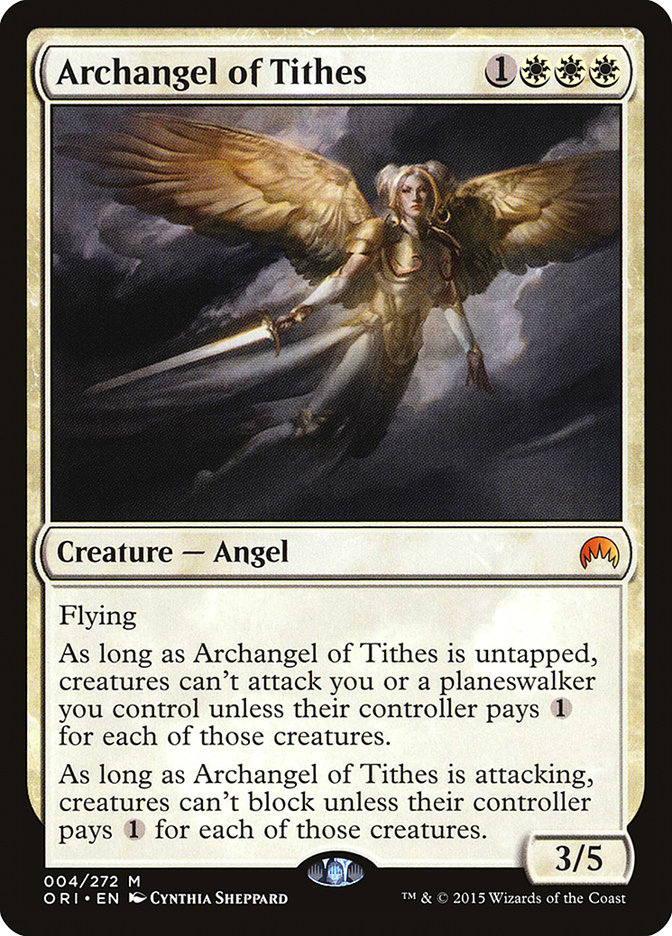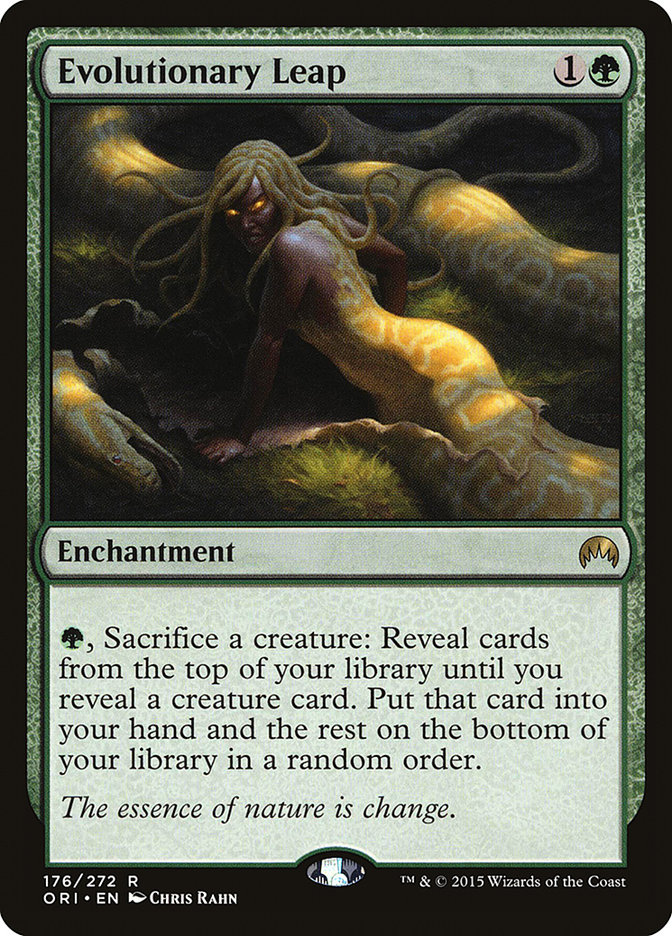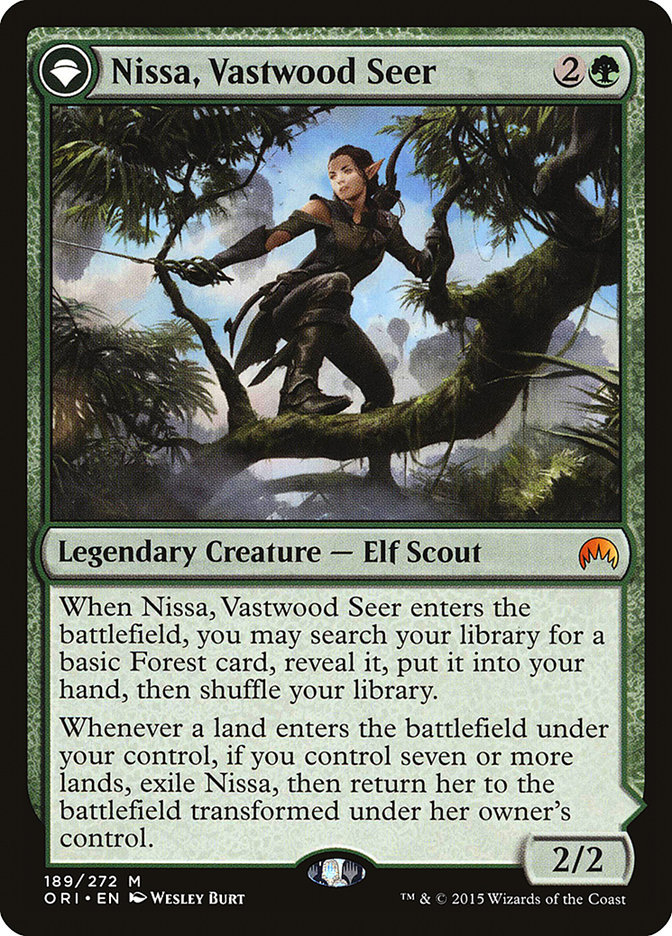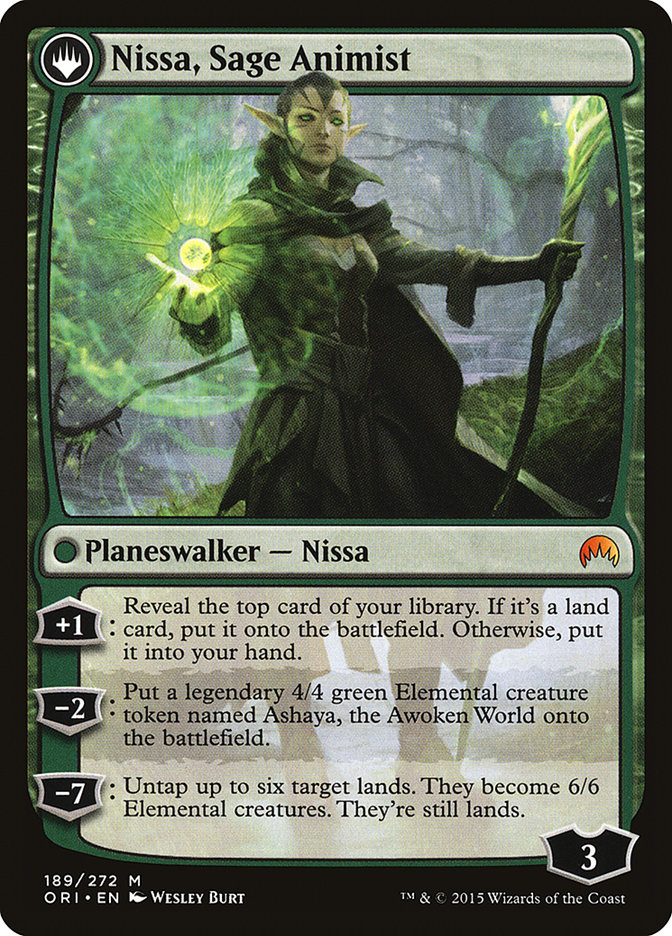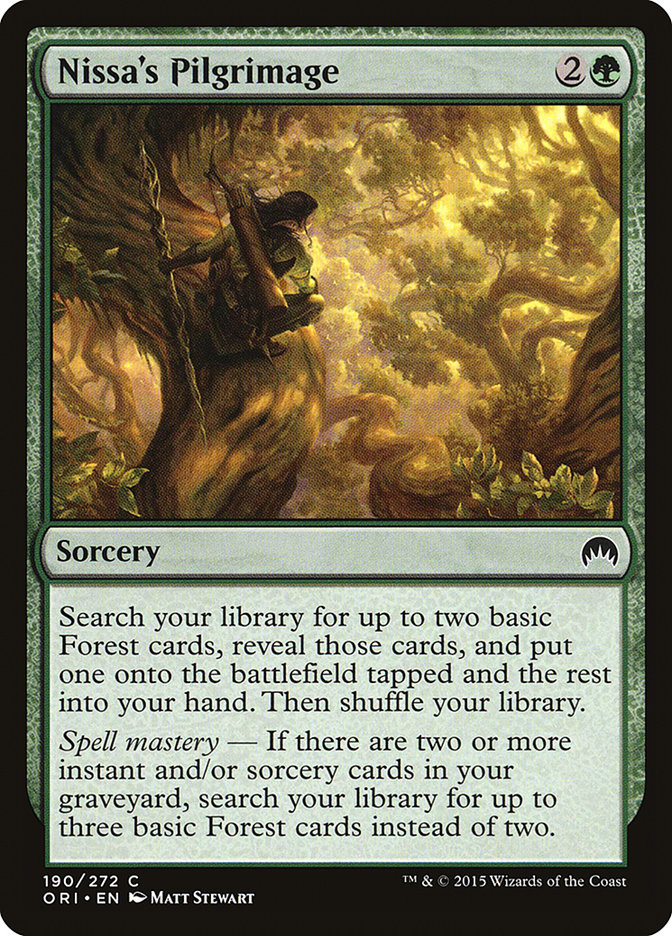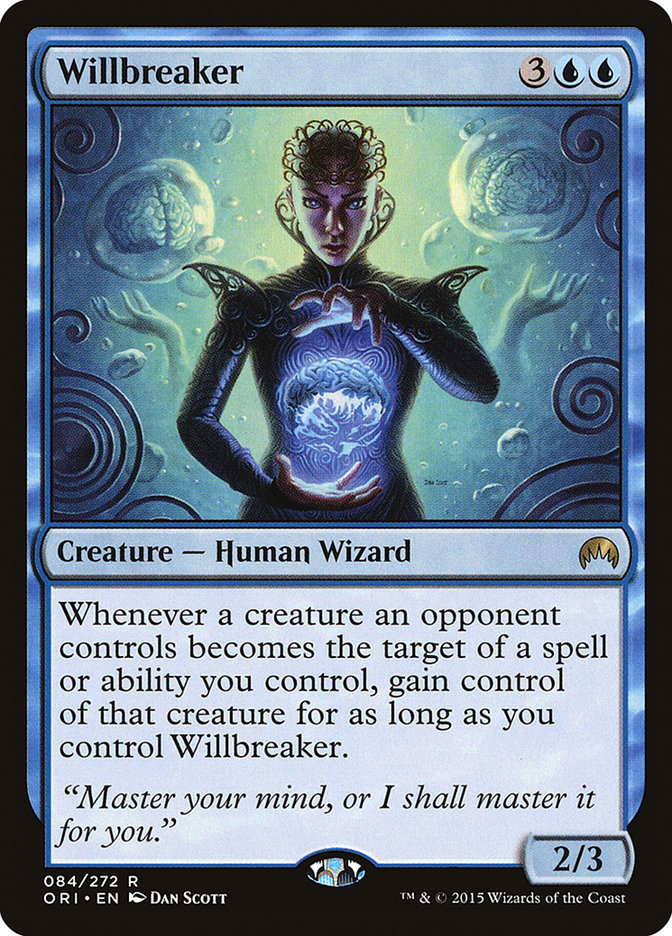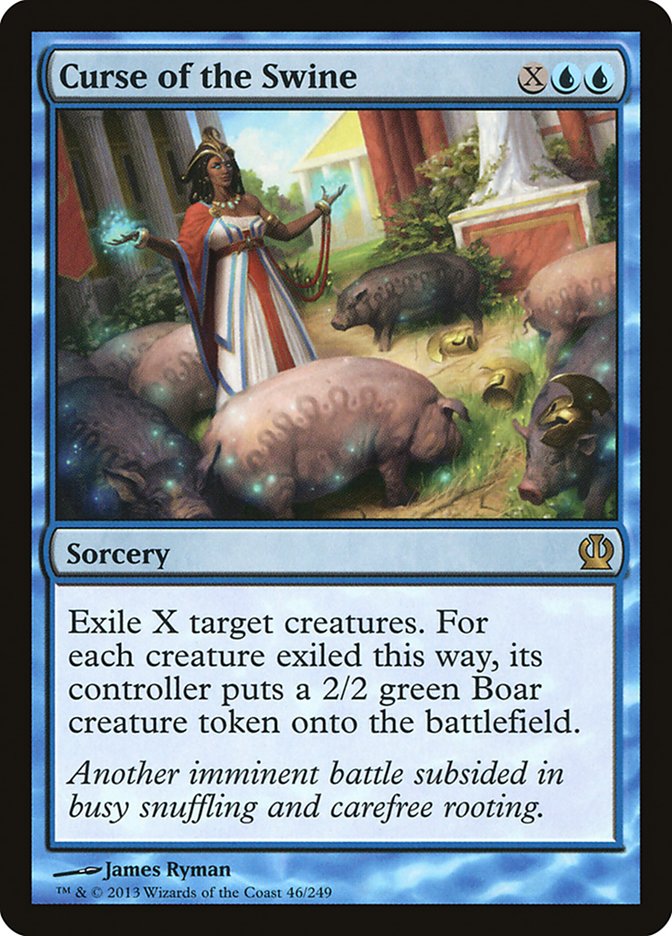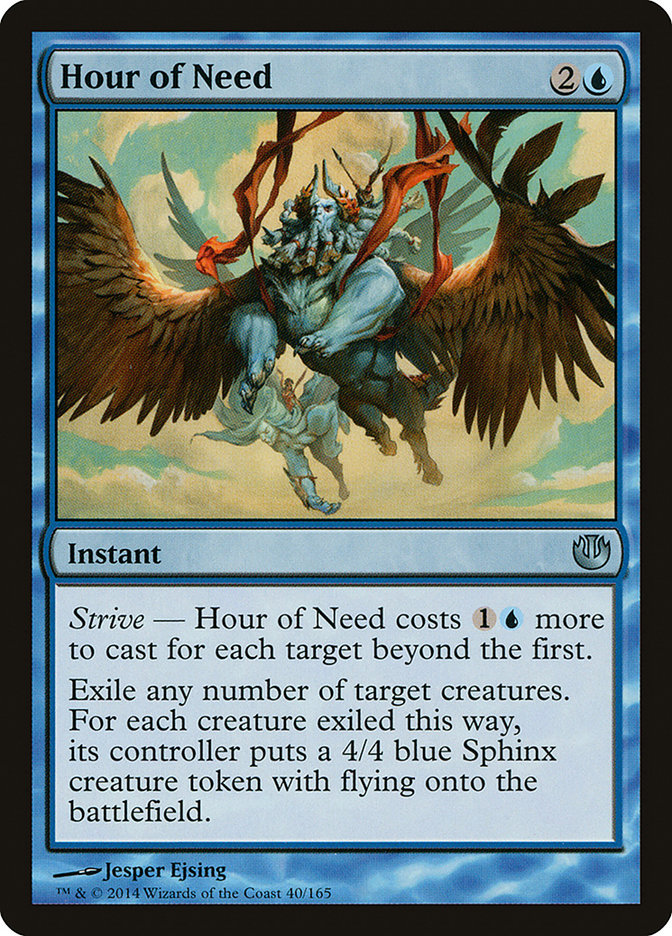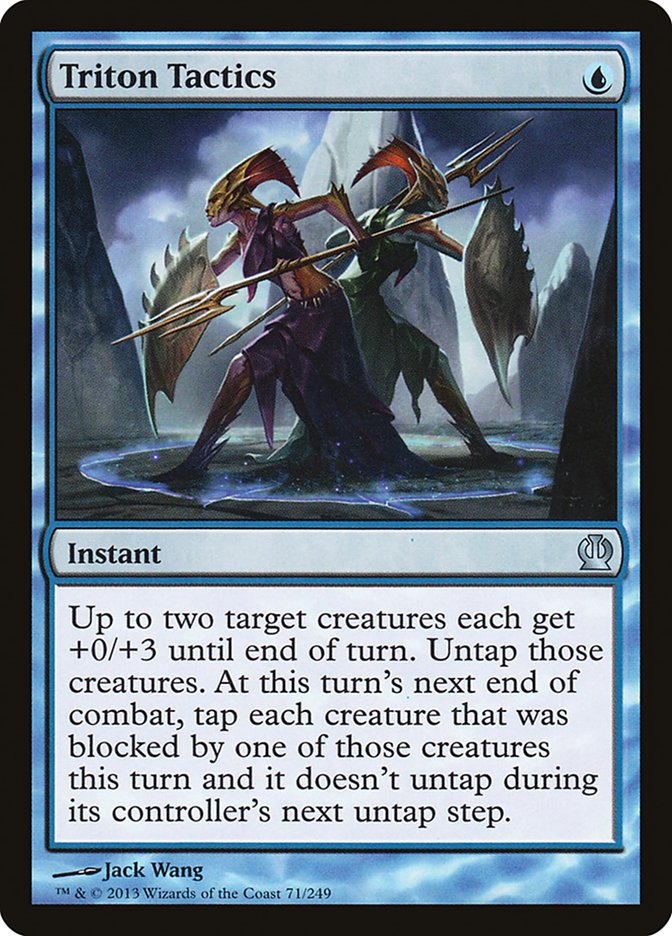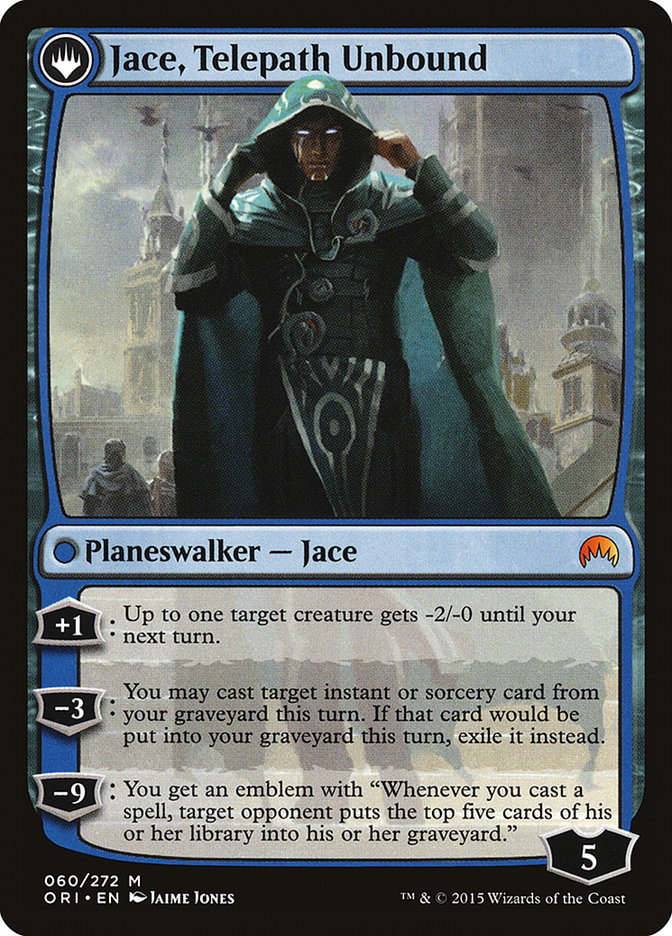My God, it’s full of cards!
This set just has so many cards for so many decks.
I am pretty sure they just made a list of literally every single deck anyone ever wished had a little bit more, and then made sure to print two cards for everyone. Devotion, Tribal, Artifacts, Dragons, Tokens, Reanimator, Dredgevine, Burn, Control, White Weenie, Constellation… this set enables decks all over.
They can’t all be good, since some moving up is going to raise the bar so that even if a deck would have become good enough, it now has a tougher world in which to fight. However, until we figure out what the basic building blocks of the format are, we aren’t really in a position to figure out the best deck to tune and play.
Today I’m going to tackle tons of new decks made possible by Magic Origins, as well as some updates with valuable new additions. Wednesday was all about white decks. Monday, we focused on blue. Last week, we focused on red. Today, we finish the job.
As if it wasn’t clear that WotC wants to give all the Devotion strategies one last hurrah, Erebos’s Titan is a pretty clear signal we need to work on heavy black decks. It works great with Black Devotion, but it’s also worth considering in Mono-Black Aggro as well as any deck with Languish.
It’s not just a 5/5 for four. The indestructible ability can punish slower decks, and is a particularly nice combo with instant-speed black removal. It’s yet another reason to play exile effects and Edicts rather than rely too heavily on Hero’s Downfall (whenever possible).
The ability to return the Titan to your hand is an interesting puzzle. After all, it’s not straight-up card advantage, nor is it mana advantage. As such, it’s not worth working that hard for. However, if there’s a way to naturally ensure we can pull it off that doesn’t ask much of us, it does provide some nice inevitability. Even if we don’t have any way to exile their graveyard, we’re still going to get occasional value against opponents with Dig Through Time, Treasure Cruise, Tasigur, the Golden Fang, Deathmist Raptor, Den Protector, Flamewake Phoenix, Haven of the Spirit Dragon, Whip of Erebos, Bloodsoaked Champion, Despoiler of Souls, and opposing Erebos’s Titans.
While black control strategies have tons of great tools, both old and new, the correct way to build Black Devotion is far from a solved puzzle.
Creatures (21)
- 4 Fleshbag Marauder
- 4 Gray Merchant of Asphodel
- 1 Erebos, God of the Dead
- 1 Merciless Executioner
- 3 Liliana, Heretical Healer
- 4 Hangarback Walker
- 4 Erebos's Titan
Lands (24)
Spells (15)

This list has a ton of new cards to look at, but let’s start with the obvious:
Languish has received a ton of hype, and it is quite good (one of the better cards in the set), but the truth is this: the card is getting so much press because it is so obvious. The power level isn’t even in the zip code of Damnation, but Mutilate is a pretty good comparison, and that’s pretty good.
It’s just a bit ridiculous that I keep seeing people cutting Crux of Fate for Languish in their Esper Dragons decks. Languish might be a stronger card, which it is, but Languish is terrible with Dragonlord Ojutai while Crux of Fate is great. Yes, you can play Languish the turn before you Ojutai, if all goes well, but Languish doesn’t even kill a ton of the most important creatures, like Siege Rhino. That’s upside if you’re the one with the Rhinos, but Dragonlord Ojutai decks are less likely to sign up for that deal.
This devotion deck, however, makes excellent use of Languish. Erebos’s Titan is perfect for helping lock up the board so that when you Languish you kill several creatures (and the Titan lives). Erebos himself also lives through Languish, and if we wanted to get frisky Gurmag Angler does too.
As a general guideline, I like maindecking Languish, but sideboarding Drown in Sorrow and Crux of Fate (depending on if we’re against Tokens/Red Aggro or if we’re against Green Devotion/White Midrange decks).
Liliana is quite the complicated Vampire Nighthawk.
(rant incoming)
In exchange for giving up flying and deathtouch, you get the entire text of John Galt’s speech.
“Whenever another nontoken creature you control dies, exile Liliana Heretical Healer, then return her to the battlefield transformed under her owner’s control. If you do, put a 2/2 black Zombie creature token onto the battlefield.
+2: Each player discards a card.
−X: Return target nonlegendary creature card with converted mana cost X from your graveyard to the battlefield.
−8: You get an emblem with ‘Whenever a creature dies, return it to the battlefield under your control at the beginning of the next end step.'”
If I do?
Believe me, I understand that they are saying it gets fizzled by a Lightning Strike. I’m saying it doesn’t have to be like this. A decade from now, this card’s template is going to be an example that our children look back on and ridicule how backwards the people of this era were.
My legend with a keyword has an ability that keys off a creature dying, as long as that creature isn’t a token. If that condition is met, I exile the card and then immediately return it to the battlefield transformed. If I do what the card says to do, and don’t resist, I then get a creature of a sort that is a good example of what doesn’t work with the ability two abilities back.
From there, I have a planeswalker with a special ability of being black (which you can tell from the black dot granting this ability). It also has three abilities that use the straightforward and easy-to-understand planeswalker rules.
One hurts us both. One has a quadruple clause (nonlegendary, creature, converted mana cost X, graveyard), the other gives me an emblem (as if this thing that can’t be interacted with is actually easier to understand than just saying “For the rest of the game…”)
I hope people remember this type of hit the next time people start talking about dumbing down the game. This card literally has three digits of words on it, and you can only play with it assuming you already understand pages of other rules.
(end rant)
So we’ve got a 2/3 lifelink creature for three, but we’re going to need a little more to make it worth our while. Fortunately, her flip ability is usually a pretty solid upside. After all, you even get a body to block with (which is secretly a nice bit of card advantage).
The plus ability is solid, as gaining two loyalty a turn is nothing to sneeze at, and it lets us discard the wrong reactive cards for a profit (or perhaps Bloodsoaked Champion/Despoiler of Souls types of cards for implied card advantage). We can even discard a creature to reanimate on a future turn.
The minus-X ability is the real reason we value the backside, giving us an extra “card,” as well as a huge mana boost. For instance, get back Erebos’s Titan and now we’ve invested three mana for a permanent that has given us a 5/5 with upside, a 2/2 zombie, and a planeswalker sitting in play… not to mention having put a little pressure on their hand.
Finally, the ultimate is actually not that far off (tick up three times and then pull the trigger). It’s also pretty hard to beat since your creatures are basically unkillable, which is particularly potent with Gray Merchant of Asphodel. Additionally, if you kill any of your opponent’s creatures, you steal them. As if that wasn’t enough, you can even get back any Erebos’s Titans you lost earlier!
To really get value out of Liliana, you’ve got to have a plan for how to flip her without just intentionally killing your own creature. Fleshbag Marauder and Merciless Executioner are my first choice, though sometimes you just block with one of your other creatures. Fleshbag Marauder is slightly better so as to not reveal whether or not you have zombie synergies, but it’s not that big a deal.
It might not contribute towards Devotion, but Hangarback Walker is just an underrated card that is sweet in general. It’s a good two-drop in a world where a lot of people are desperate for two-drops, including controlling black decks. If they don’t kill it, it becomes a serious threat over time. If they do, you get card advantage and another body.
Depending on the board, you might sacrifice your Hangarback Walker to your Fleshbag Marauder on turn three, leaving you with three creatures and your opponent down one. Just be careful not to walk into Abzan Charm types of cards needlessly.
Fleshbag types reduce our desire for three-cost removal, but we do need some versatility. Bile Blight gets the nod because of how much we need the extra token insurance if we want our Edict effects to work. Otherwise, Ultimate Price is probably going to increase in value a bit.
I am real unsure on this one. It’d be a lot better if we just had a few more reliable bodies early, but this is one deck that actually really appreciates the extra lands. The power level of Sword of the Animist is only medium, but it’s worth trying.
While I expect Dark Petition to be more of a maindeck card, it is worth keeping in mind as a sideboard option for decks that want an extra copy of a few cards they can only play one of in the sideboard. Besides, it’s a powerful card that is only really held back by the expensive cost, which matters less in some matchups.
For science, here’s a Dark Petition-centric deck, though you can also just put one or two Dark Petitions in a variety of decks that aren’t so try-hard.
Creatures (6)
Planeswalkers (2)
Lands (25)
Spells (27)

This list is obviously experimenting with a variety of exotic card choices. For instance…
These types of cards aren’t usually good, but this one is cheaper than they usually are. For a long time now, black decks have basically been slave to Gray Merchant or Whip of Erebos in terms of lifegain. Prism Ring, Liliana Heretical Healer, and even Blood-Knight give us a lot of new options to consider, which then changes the power of the many great black cards that require payment of life.
As always, this type of effect is generally overrated by the bulk of tournament players. This is a good card at doing a very specific job. It’s not really what you want to just jam “for value,” unless you have an above-average ability to see your opponent’s hand (perhaps Brain Maggot) and the format has gone a direction that is real heavy on certain cards (like Deathmist Raptor or Despoiler of Souls). It is sweet against “show you a Dragon” cards…
It might be the case that Erebos’s Titan recursion is too attractive to pass up. The most obvious (good) way to ensure we have unlimited Titans is Pharika, God of Affliction.
Creatures (20)
- 2 Fleshbag Marauder
- 4 Gray Merchant of Asphodel
- 1 Erebos, God of the Dead
- 4 Satyr Wayfinder
- 1 Pharika, God of Affliction
- 1 Tasigur, the Golden Fang
- 1 Sidisi, Undead Vizier
- 2 Den Protector
- 4 Erebos's Titan
Lands (23)
Spells (17)

Each time we Pharika our opponent, we can get our Titan back (perhaps pitching an extra land from Satyr Wayfinder). We just need a plan against the 1/1 deathtouch creature. Sometimes a removal spell is enough, but Virulent Plague locks them all out while also crippling more than a dozen other popular cards.
I’m interested to find out how often Gather is “just” an Impulse variant and how often it actually draws us two cards. We’ve got the spells for it, we’ve got the creatures for it, and we’ve even got ways to mill ourselves (increasing our chances of obtaining Spell Mastery) as well as ways to get paid from the milling it does.
This card is really interesting to me. All that scrying really adds up and then, going long, it gives us a real nice compliment to the “drain them” plan. Our self-mill makes it likely that we’ll actually get to four creatures. Besides, all of these black enchantments really add to our devotion.
Of course, there’s a lot of ways to go with self-mill in this set. For instance:
Creatures (28)
- 4 Elvish Mystic
- 4 Satyr Wayfinder
- 4 Bloodsoaked Champion
- 4 Den Protector
- 4 Deathmist Raptor
- 4 Despoiler of Souls
- 4 Graveblade Marauder
Lands (22)
Spells (10)

This is a pretty extreme build but it might be sweet, especially if we expect to face a lot of removal. I intentionally avoided enchantments for this build, fighting Dromoka’s Command and the like. However, if we embrace enchantments we get Nyx-Weaver, Nighthowler, and maybe even stuff like Strength from the Fallen.
The body is deceptively real on the Marauder, and it can hit really hard in self-mill decks. How to get it through is an interesting question though. What I really want to do is find a way to partner it with Mogis’s Marauder and Arashin Foremost. Remember, double strike will trigger the ability twice! I just haven’t figured out a deck yet that can use cards like that while also filling its graveyard enough…
There is another G/B deck I am super excited to work with. This strategy is likely going to become a staple in the format, in some form or another:
Creatures (32)
- 4 Sylvan Messenger
- 1 Fleshbag Marauder
- 4 Elvish Visionary
- 4 Elvish Mystic
- 1 Reclamation Sage
- 3 Nissa, Vastwood Seer
- 2 Gilt-Leaf Winnower
- 1 Dwynen, Gilt-Leaf Daen
- 4 Dwynen's Elite
- 4 Gnarlroot Trapper
- 4 Shaman of the Pack
Lands (23)
Spells (5)

A fairly in-depth examination of most of the new Elves can be found here. Gilt-Leaf Winnower hadn’t been spoiled, yet, but is an excellent addition. Killing Siege Rhino is very important for this deck. Besides, it’s nice to find removal spells with your Sylvan Messenger.
Eyeblight Massacre is a much-needed tool against tokens, Goblins, and any fast-creature aggro decks (besides the mirror). That it costs four isn’t that big a deal since our early creatures will buy us tons of time.
There is another black tribe to consider with Magic Origins, but this one is going to take some serious imagination to crack the code for (as opposed to Elves, where you can just play the above list as-is and you are likely going to get a winning record right out the gate).
Creatures (30)
- 4 Fleshbag Marauder
- 4 Gray Merchant of Asphodel
- 1 Spiteful Returned
- 4 Bloodsoaked Champion
- 4 Sultai Emissary
- 4 Risen Executioner
- 1 Liliana, Heretical Healer
- 4 Undead Servant
- 4 Despoiler of Souls
Lands (24)
Spells (6)
Sideboard

Zombies haven’t been a “thing” in a long time, but they do gain a few new tricks. To start with, Fleshbag Marauder is a Zombie, of course, but so is Gray Merchant. Despoiler of Souls, while not a Zombie, fits perfectly into the Necromancer’s Stockpile/Fleshbag Marauder gameplan, not to mention just being an awesome card in aggressive decks.
I like the idea of discarding Undead Servant to Necromancer’s Stockpile early on, then getting paid off big later. In general, the first Servant is bad, the second is fine, and the third is amazing. However, both Necromancer’s Stockpile and Risen Executioner change this equation.
If you’re feeling particularly bold, you might splash blue for Possessed Skaab. It’s a passable card on its own, but it creates a fun loop with Cruel Revival (which is also just sweet with Gray Merchant) when things go long. Disdainful Stroke and Negate out of the sideboard are sweet, and the mana’s easy (4 Delta, 4 Temple, and an Island is probably enough, but you could also add a Dismal Backwater or two without much trouble). The real issue is the bottleneck at five mana.
It’s not a Tribal deck, but this next aggro deck has not one but two themes that it gets rewarded for:
Creatures (30)
- 4 Elvish Mystic
- 4 Reverent Hunter
- 1 Nylea, God of the Hunt
- 4 Avatar of the Resolute
- 4 Servant of the Scale
- 4 Honored Hierarch
- 4 Managorger Hydra
- 4 Hangarback Walker
- 1 Undercity Troll
Lands (21)
- 21 Forest
Spells (9)
Sideboard

Green Devotion doesn’t just have to be based in Nykthos into Dragonlord Atarka. Reverent Hunter is a very legit way to get paid that happens to also go hard on +1/+1 counters. Magic Origins has so many sweet +1/+1 counter cards, maybe we can make Green Devotion Aggro into a Hardened Scales deck? Hangarback Walker getting two counters a turn is extremely filthy, and it works wonderfully with Avatar of the Resolute.
The much-maligned Honored Hierarch gets a bad rep. Yeah, it’s not as good as Noble Hierarch, but a lot of cards aren’t. Unfortunately it’s not actually in the tier below that either, but the card still has chances of playability. If you hit someone with it on turn two, you are doing something better than people are letting on – particularly if you play Hardened Scales, Avatar of the Resolute, and Inspiring Call. The only hard part is what to do when you draw it off the top.
Yes, it dies to Hero’s Downfall. Have you noticed a theme in the decks above? If there are less Downfalls and more Edict effects, that’s a good sign for the Hydra. Regardless, they aren’t always going to have the removal spell, and the Hydra grows real big real fast. If there’s a Hardened Scales in the mix, things get hyperbolic, hyperbolically.
Okay, this isn’t really the deck for the Troll but I do think it’s a little better than people say. It’s probably going to end up barely not good enough, rather than not even close, but who knows?
The real way to play the Troll is to clear a path for it (or target it with a pump spell that grants trample). Here’s a deck that actually puts it to proper use:
Creatures (23)
- 4 Honored Hierarch
- 4 Valeron Wardens
- 4 Goblin Glory Chaser
- 4 Abbot of Keral Keep
- 3 Scab-Clan Berserker
- 4 Undercity Troll
Lands (22)
Spells (15)
Sideboard

This deck plays out mostly like a G/R Aggro deck, but has a bunch of warped card choices to get maximum value out of Valeron Wardens.
It’s probably not worth playing so many “second choices” to support Valeron Wardens, but it is going to lead to some serious snowball games. To really get a lot out of your Renown creatures, clear a path for them!
If you do want to experiment with Valeron Wardens, you can also pair it with white since Consul’s Lieutenant and Relic Seeker are great cards in their own right. You just need to figure out how you want to get your creatures through reliably.
Speaking of W/G decks, here’s another concept I’ve been thinking about:
Creatures (24)
- 4 Knight of the White Orchid
- 4 Fleecemane Lion
- 4 Brimaz, King of Oreskos
- 2 Wingmate Roc
- 2 Whisperwood Elemental
- 4 Warden of the First Tree
- 4 Archangel of Tithes
Lands (25)
Spells (11)

Elemental Bond asks us to play three-power creatures, and there are a lot of great three-power creatures to choose from. It seems logical to start with W/G, since we want a good curve of three-power creatures and this way we get Fleecemane Lion. Warden of the First-Tree doesn’t trigger Elemental Bond, but it’s just a great card for us anyway.
I particularly like Knight of the White Orchid in decks that want a third white mana or want to ramp to five. This deck wants both, so good times.
One of my favorite cards in the set, we discussed Archangel of Tithes at length on Wednesday. Long story short, I’m a believer.
Elemental Bond could be sweet, but it probably has a lower likelihood of ending up a tournament force than another green enchantment in Magic Origins:
Evolutionary Leap is totally rad!
Its primary use is to combine with enters-the-battlefield triggers for massive card advantage. If you add a Nykthos to the mix, you can generate some serious extra cards, particularly if you are sacrificing Deathmist Raptors than you then get back for free from the Den Protectors you find.
Creatures (31)
- 4 Elvish Visionary
- 4 Elvish Mystic
- 4 Satyr Wayfinder
- 1 Reclamation Sage
- 4 Whisperwood Elemental
- 3 Dragonlord Atarka
- 4 Den Protector
- 4 Deathmist Raptor
- 3 Nissa, Vastwood Seer
Planeswalkers (3)
Lands (23)
Spells (3)

How much to push the Evolutionary Leap aspect, versus how much to stay truth to Green Devotion, is a good question. Maybe we need cards like Rattleclaw Mystic and Sylvan Caryatid, but they make our Evolutionary Leap a lot less awesome at times – though having more mana means we get to make more Leaps.
Nissa is just a great card on her own, but she does some really cool things here. You get the extra mana, then sacrifice her to the Leap. When you get one later, she is an extremely mana-efficient threat. Besides, sometimes, you can just use Den Protector to get her back and flip her in the same turn (or untap and play her, flipping that turn).
If we want to push Nissa to absurd lengths, maybe we just go all-in on the Forest theme:
Creatures (25)
- 4 Elvish Mystic
- 1 Polukranos, World Eater
- 4 Courser of Kruphix
- 4 Satyr Wayfinder
- 4 Nessian Game Warden
- 4 Kalonian Twingrove
- 4 Nissa, Vastwood Seer
Lands (22)
Spells (13)

This deck is built around Nissa, Vastwood Seer and Nissa’s Pilgrimage, giving us a ton of Forests to fuel Nessian Game Warden and Kalonian Twingrove.
Satyr Wayfinder, Gather the Pack, and Commune with the Gods give us pretty good chances of having Spell Mastery for the Pilgrimage, but even without it two more Forests, including one on the battlefield, is a nice alternative way to ramp that is very resilient against removal.
Maybe Zendikar Roil is too slow, but we’re going to consistently make at least a 2/2 each turn for zero mana – plus each fetchland makes two tokens. It’s probably going to get stronger this fall, but for now… maybe it’s a way to hedge against sweepers and removal.
I consider Animist’s Awakening, but you need to cast a pretty big one to make it worth it, and you need to really want to ramp up to eight or more. Maybe there is a sick combo deck with Days Undoing or The Great Aurora, maybe there is a fast Ugin deck that wants this, but I’m guessing it’s probably for this fall (when Landfall probably returns).
There are other Evolutionary Leap decks I wanted to take a look at, as the card can be used in so many ways. For instance, we can use it in a mostly normal deck that makes only minor concessions to support it.
Creatures (22)
- 2 Elvish Visionary
- 3 Courser of Kruphix
- 4 Satyr Wayfinder
- 4 Siege Rhino
- 4 Den Protector
- 3 Deathmist Raptor
- 2 Nissa, Vastwood Seer
Planeswalkers (2)
Lands (24)
Spells (12)

This list is a little lighter on removal than I’d like, so we probably need to trim a couple bodies, but the main thing is just using Evolutionary Leap as a source of card advantage that also happens to brutally punish opponents who rely on removal. Every time they try to kill one of your creatures, sacrifice it to draw another!
Courser of Kruphix is really cool with Evolutionary Leap, giving us a ton of control over the top of our library. If you see something you want, draw it. Otherwise, sacrifice a Wayfinder on your upkeep and reset the top.
In order to go long on green mana for Evolutionary Leap I’ve moved away from double-black spells like Hero’s Downfall, but if I decide we need that effect we can always play more Utter Ends or whatever works best for the metagame at present.
Of course, Evolutionary Leap is also capable of leading us to some completely crazy decks. Today’s wackiest brew of the deck award goes to:
Creatures (24)
- 1 Elvish Visionary
- 2 Elvish Mystic
- 1 Polukranos, World Eater
- 4 Kiora's Follower
- 1 Satyr Wayfinder
- 4 Yisan, the Wanderer Bard
- 1 Reclamation Sage
- 1 Shaman of Forgotten Ways
- 1 Profaner of the Dead
- 1 Sidisi's Faithful
- 1 Icefall Regent
- 1 Jace, Vryn's Prodigy
- 1 Nissa, Vastwood Seer
- 4 Willbreaker
Lands (24)
Spells (12)

Look, let me explain…
Ok, well, see…
Admittedly, this is an ambitious brew.
Willbreaker gets brutalized by removal, but if somehow it were to live, there are some really awesome combos with it. For instance, Curse of the Swine your opponent’s team and you will steal all of her creatures before they turn into pigs, who will then be loyal only to you. Hour of Need is similar, but gives you huge 4/4 fliers.
Why not play more copies of Hour of Need? Maybe we should, but it is much riskier, and I’m not sure how much we should be trying to make Willbreaker even better when it lives. Curse of Swine is just a fine card on its own.
Triton Tactics is another fun one with Willbreaker. Once you’ve got some mana, you can cast Willbreaker with three mana open. When they kill it, you Triton Tactics in response, steal two creatures, then sacrifice them both to Evolutionary Leap.
Triton Tactics can also lead to some nutty game-states with Yisan, the Wanderer Bard. Yisan typically finds Elvish Mystic first, then Kiora’s Follower, but after that things get crazy. You can use Kiora’s Followers on Yisan to speed things up, and if that isn’t fast enough, you can untap both Yisan and the Followers with Triton Tactics (although sometimes the Followers just untap Nykthos, Shrine to Nyx to go real big).
Yisan searching up Jace on your opponent’s end-step gets around Jace “dying before he can flip,” often letting you Dig Through Time again right after you loot. Kiora’s Follower untapping Jace is also sweet, and sometimes you just really want to get back a Triton Tactics or Hour of Need. Jace’s +2 ability is actually pretty sweet here, giving us a reliable way to target each new creature our opponent puts down.
Once we’ve stolen some creatures, don’t hesitate to sacrifice them at the first opportunity. Evolutionary Leap is great when we have it, but we can also use them with Exploit. It’s also worth noting that Yisan finding Sidisi’s Faithful or Profaner of the Dead at instant speed can really surprise people. Profaner of the Dead is particularly important as an option for our toolbox, in case we need to Curse of the Swine or Hour of Need all of our opponent’s creatures (since tokens don’t come back).
There are still so many cards in this set to experiment with! It’s pretty clear this is going to take some work. For instance, is there anything we can do with this card (before Eldrazi maybe return, this fall)?
Nissa’s Revelation’s is a bigger, more awkward Interpret the Signs. After all, if you just reveal Dragonlord Atarka, you are drawing eight cards and gaining eight life (not to mention having just gotten to scry 5). A boatload of life is exactly what we’d want in this spot, and it’s very interesting to have such an option in a non-blue deck. The question, however, is what deck actually plays enough high power creatures to make this viable, and can it then afford to play some seven-mana card-draw spells?
I’m not sure what the minimum number of “hits” is going to turn out to be, but four Dragonlord Atarkas is nowhere near enough. It’s probably going to involve playing six to eight bigger hits, and eight-plus modest hits (like Deathmist Raptor, or something else in that size range).
I’m out for today, but will be back Monday with even more brewing. Plus, we also need to figure out which decks from the old format will survive, and what they’ll look like. See you then!
Top 10 Cards in Magic Origins!
10. Evolutionary Leap
9. Harbinger of the Tides
8. Exquisite Firecraft
7. Erebos’s Titan
6. Archangel of Tithes
5. Kytheon, Hero of Akros
4. Shaman of the Pack
3. Nissa, Vastwood Seer
2. Languish
1. Abbot of Keral Keep
Honorable Mentions: Consul’s Lieutenant, Thopter Spy Network, Despoiler of Souls, and Dwynen’s Elite!

